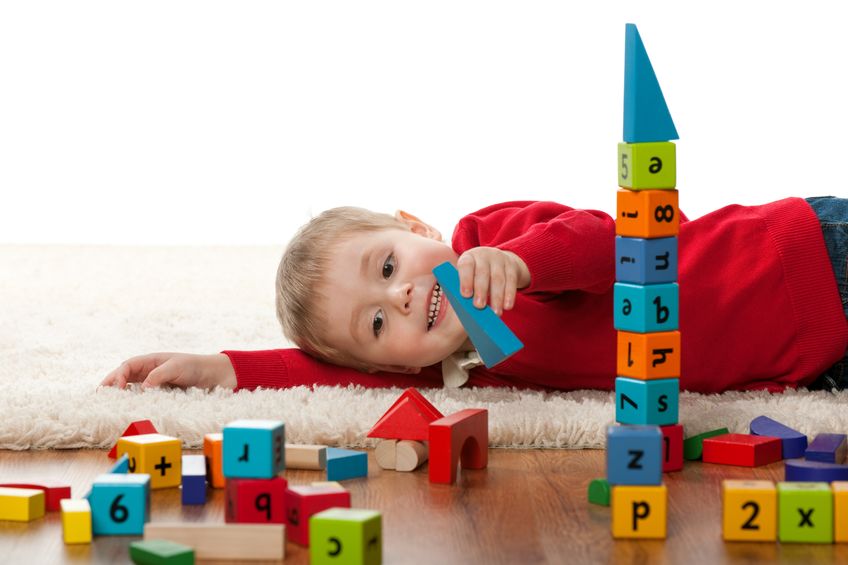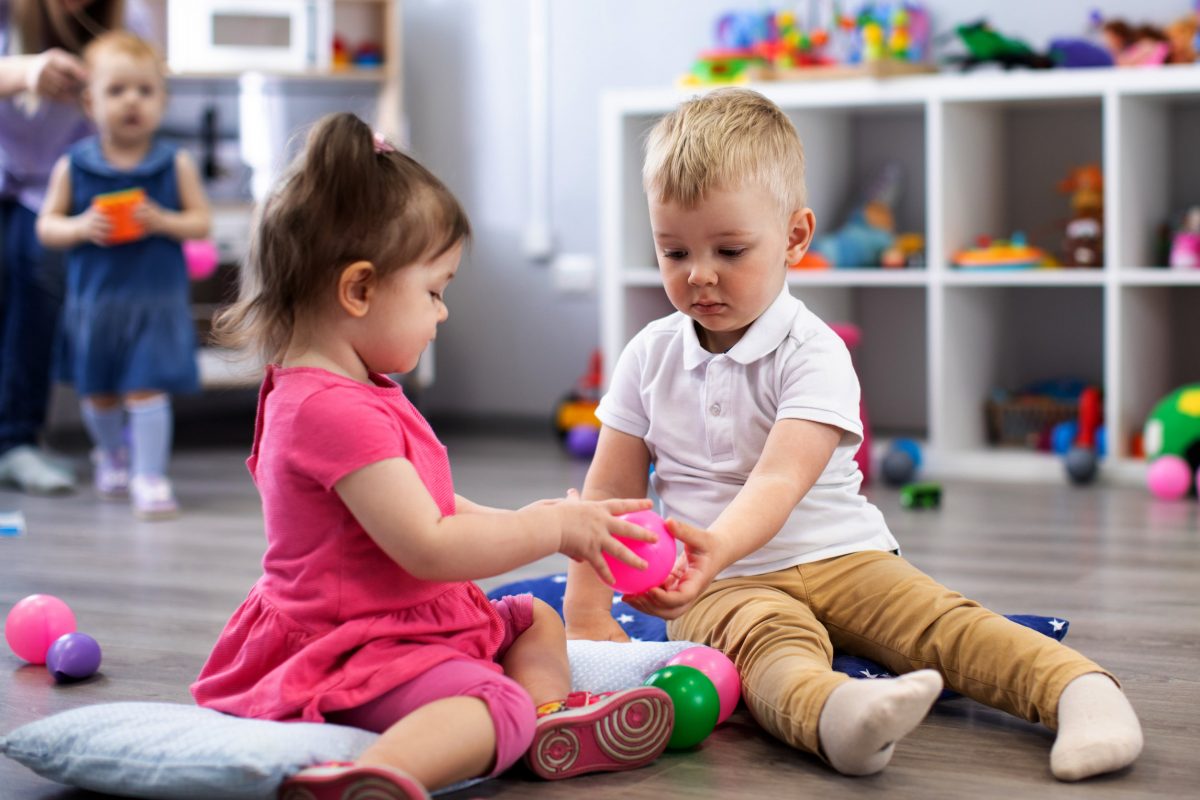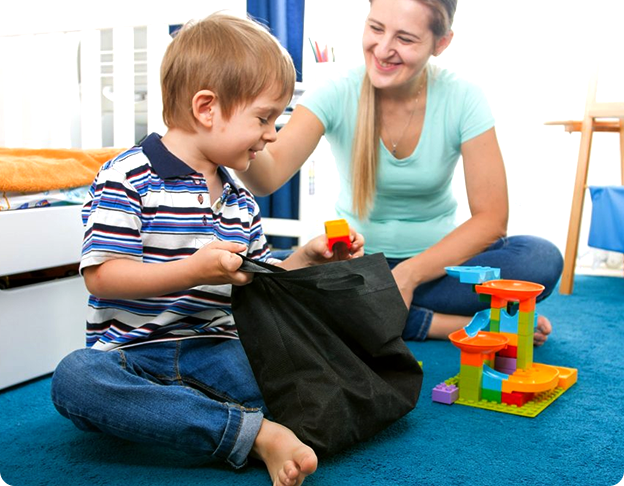How does your child do when asked to follow instructions? Say, for example, that you ask them to get an item you describe. Do they bring the object you wanted, or do they grab something that only meets part of the description criteria? Using multiple cues will help improve their responses over time.
Children with autism and other developmental disorders have difficulties responding to multiple cues on their own accord. Some research indicates that the inability to focus on more than one cue may be partially responsible for the behavior in children with autism.
Incorporating multiple cues into your kid’s daily life can encourage learning and facilitate meaningful change in the long run.
What are Cues?
Cues are words used to describe an object. Some refer to cues as properties or attributes. They help to define and specify items so that children can easily pick them out of a lineup.
Think of a cue as an adjective. Cues can reflect an item’s:
- Size
- Color
- Shape
- Texture
- Appearance
For example, you could identify a ball as red, round, bouncy, and made of rubber. All of those descriptors are cues.
Why Should You Teach Multiple Cues?
The ability to respond to multiple cues is one of many pivotal areas of a child’s development. It’s an essential aspect of Pivotal Response Treatment that can help kiddos see improvements in every facet of their life. From social interaction to communication and general behavior, attending to several cues can make a significant difference.
It gives your child the tools they need to focus on more than one element of their environment and see the bigger picture. Children with developmental disabilities often suffer from a phenomenon known as stimulus oversensitivity. When several stimuli exist, they tend to prioritize one and exclude the others.
The goal of teaching multiple cues is to get over that hurdle so children can learn new behaviors, engage in social activity, and more. Using multiple cues in ABA therapy can also encourage generalization and help children apply skills in different situations.
Key Considerations When Teaching Multiple Cues
Using multiple cues is not as simple as throwing tons of descriptors at your child!
Like all therapy techniques, it’s better to take a systematic approach to maximize impact with your child’s young mind. Here are some considerations to keep in mind when teaching multiple cues.
Start Slow
The most important thing to remember is pacing.
Children can quickly become overwhelmed by challenging situations. Using several cues right off the bat can lead to setbacks rather than progress. Children with autism learn differently, so it’s essential to take things slow and easy.
Exaggerate Cues
Start by exaggerating differences with objects.
For example, you could begin with teaching your child the differences between small and large objects. When you do so, grab two things that are massively different!
Use a small, quarter-sized bouncy ball and compare it to a basketball! Extreme exaggeration is a great way to capture your child’s attention; it works with communication and learning. Plus, it highlights the disparities and conveys your point.
Slowly Fade and Normalize
Over time, you can begin to fade the exaggeration and normalize subtle differences.
Using the example from earlier, you can slowly swap the smaller rubber ball with a tennis ball or baseball. There’s still a stark difference in size from the basketball, but the exaggeration is no longer present.
This process is crucial for generalization. Not every scenario is going to have objects with such apparent differences. Your child needs to learn how to distinguish subtler variations so that they can apply those skills elsewhere.
Be as Specific as Possible
Whether learning activities are structured or more organically centered around daily activities, it pays to be as specific as possible.
Children thrive on specificity. Furthermore, providing multiple specific cues gives them more opportunities to get things right.
When asking your child to fetch an item, provide multiple cues. You could say, “Please get me your blue raincoat from the closet.” Not only does your child have to select the raincoat, but they have to pick the blue one to get the exercise right.
What Skills Can Kids Gain from Learning Multiple Cues?
Teaching multiple cues can have a profound impact on your child’s overall development. In addition to helping them generalize behaviors, it provides several skills that they can take elsewhere.
Following Multi-Step Instructions
Learning to follow directions is difficult enough for children with developmental disabilities. Multi-step directions are even more challenging!
Multiple cues can teach kids how to simplify and organize direction in their heads. It gives them the know-how to break down every element, making long-tail instructions more manageable and easier to follow.
Building a Vocabulary of Usable Words
Communication issues are a big hurdle to get over. While learning to become more social is a long-term process, utilizing multiple cues is one important wrung on the ladder to success.
Introducing cues expands a child’s vocabulary by teaching them new descriptors they can use in conversation.
Joint Attention
Joint attention occurs when two people focus on an object for the sole purpose of interacting with one another. There’s a good chance that you’ve attempted to initiate joint attention with your child through play and everyday living.
Unfortunately, developmental disabilities make it difficult for some kids to share focus. As a result, many suffer when developing social and cognitive skills.
Using multiple cues during is all about joint attention! It naturally encourages collaborative interaction and can make kids more comfortable with the social elements involved.
Using Multiple Cues Efficiently
The beauty of Applied Behavior Analysis (ABA) is that many therapy techniques are easy to adapt at home in everyday situations. In fact, one of the best ways to maximize its impact is to teach your child when they don’t even realize they’re learning.
Incorporating multiple cues is easy. It’s all about being more descriptive when asking for items.
Try using cues when getting ready in the morning. You could make outfit requests from the closet. Be as specific as possible and ask for items using several cues. For example, you could ask:
- “Can you grab your yellow hooded sweater?”
- “Where are your green sneakers?”
- “Can you give me your tee shirt with the red dinosaur on it?”
Each one of those questions includes multiple cues to follow.
It doesn’t have to stop there. You can try the same technique at the grocery store, in the playroom, and more.
Make sure to keep things exciting and focus on many different objects. Don’t linger too much on a single entity, as your child could get bored and lose focus.
Add some variety to keep things fun! Your child can learn and develop those all-important skills everywhere you go.
Over to You
Ready to start using multiple cues with your child? Download our free resources kit and find new, practical ways to encourage learning.
The concept of introducing cues into your daily interactions might seem simple, but it’s an impactful way to facilitate learning at every corner. Before you know it, your child might have newfound skills that change the way they think, speak, and communicate. 




